- Established 1982 -HOME: www.hiltonpond.org
THIS WEEK at HILTON POND Subscribe for free to our award-winning nature newsletter (Back to Preceding Week; on to Next Week) |
SPRING MIGRATION, Part 1: The last half of April at Hilton Pond Center is always an interesting time when ephemeral spring flora continue putting on a show and spring migrant avifauna appear more frequently as they wend their ways from the Neotropics. Some birds stop here to breed while others keep going as far as hinterlands of boreal Canada; In our long-term 42-year effort to monitor resident and migratory species at the Center, we regularly deploy mist nets and various traps to capture wild birds. (Our first banding 'way back on 28 June 1982 was a female Common Grackle, above left, trapped in breeding condition.) Traps are a little more selective than nets because of baits we use--sunflowers, millet, and cracked corn attract sparrows, finches, and other "seed-eaters"--and sugar water bringing in hummingbirds. Conversely, with our mist nets hung between poles in shaded locations we never know what me might capture as birds bumble into nearly invisible mesh.
All text, maps, charts & photos © Hilton Pond Center Some years various traps have caught most Ruby-throated Hummingbirds we banded, but--inexplicably--during other field seasons mist nets turned were more effective in capturing these tiny balls of fluff. (NOTE: The adult male RTHU above was caught in a passive Dawkins-style trap. He flew in to reach a sugar water feeder and couldn't figure out how to exit. Through April 2023 the current season has been about average for ruby-throats, with just five new captures--plus two returns banded last year.)
All text, maps, charts & photos © Hilton Pond Center On 15 April we looked out our office window at the Center's old farmhouse and were surprised to see in a distant mist net what at first glance looked like a European Starling with speckled non-breeding plumage. When we approached the net, however, we realized it was actually a Red-winged Blackbird (RWBL), with eponymous red shoulder. Although RWBL are common in wandering winter flocks across the Carolina Piedmont, we seldom capture this species at Hilton Pond; in fact, this was just our 30th individual in-hand since 1982--making it a species whose ageing and sexing characteristics were not well known to us. Because we did know adult female and young red-wings of either gender look quite similar we initially thought we had netted an immature second-year male, based on the bird's red shoulder (above).
All text, maps, charts & photos © Hilton Pond Center We were confused further by the extensive orange-buff on the bird's throat and face (above), but after checking a few references we realized we were actually looking at a female Red-winged Blackbird whose orange-ish highlights suggested she was quite mature. What a surprise!
All text, maps, charts & photos © Hilton Pond Center In our confusion we were reminded observers sometimes have problems identifying female and immature Red-winged Blackbirds even to species because they are so different in appearance from adult males (above). We fully sympathize with those folks after our recent experience with the surprisingly colorful adult female RWBL just banded at Hilton Pond Center. (NOTE: One thing to look for on any Red-winged Blackbird is its heavy, tapered, sharply pointed black bill--an appendage this species often applies with force to the bird bander's hands. Ouch!). All text, maps, charts & photos © Hilton Pond Center YALLER BIRD #1 After a winter of watching and banding mostly brown birds--various finches and sparrows, for example--it's always nice to see bright yellow feathers come spring at Hilton Pond Center. First to change are American Goldfinches that start acquiring breeding plumage as early as March--even though they won't nest until mid- to late summer. And by April a few warblers begin to arrive, delighting our eyes with yellow hues from amber to lemon and citrine to maize.
All text, maps, charts & photos © Hilton Pond Center The brightest yaller bird this week was a male Prothonotary Warbler (PROW)--just our 20th banded in 42 years at the Center. The human eye is immediately attracted to this bird's brilliant yellow head, breast, and belly--eBird calls this "shockingly bright"--so much so that one often overlooks the PROW's expansive white tail spots (see photo above). Slate gray wings and greenish back make for a nice contrast against golden yellow. Also of note is the PROW's piercing black eye, plus a black bill quite large for a warbler.
All text, maps, charts & photos © Hilton Pond Center We've often heard the name "prothonotary" comes from the term for high-ranking Roman Catholic clerks who supposedly wore bright yellow vestments. However, according to correspondent David Spector (biology professor emeritus at Central Connecticut State University) there is no apparent evidence of such garments and the epithet must have some other origin. "Prothonotary" IS the name applied to judicial clerks, and Dr. Spector suggests "the bird's [loud and monotonous] ringing call reminded someone of the voice of a loud court official." Incidentally, the warbler's yellow is derived from what it eats: Beetles, caterpillars, spiders, and especially Mayflies that, in turn, get yellow carotene and xanthophyll pigments from plant matter they consume. In our experience, Prothonotary Warblers show a greater tolerance for humans than many other parulids; they and their nests are quite approachable, especially in Lowcountry swamps where they frequently breed. The nest is typically in a cavity--often right at the high water mark--and the species will use artificial wooden nest boxes near riparian habitats. A male (below) gathering moss for its nest a few years ago at Hilton Pond Center was eventually displaced by aggressive Eastern Bluebirds. (The PROW's preferred 1-1/4" or 1-3/8" entry hole is slightly smaller than the standard 1-1/2" hole recommended for bluebirds and may exclude the latter.)
All text, maps, charts & photos © Hilton Pond Center Natural cavities are often in short supply, so nest boxes are a very good way to enhance breeding success among many birds, including Prothonotary Warblers. The species is in decline--1% per year for the last several decades--due to loss of riparian nesting locales in eastern North America and particularly from the destruction of mangrove swamps on non-breeding grounds in Mexico, Central America, and northern South America. Perhaps if your yard is not appropriate habitat you could erect and monitor a few boxes at a local park or bottomland site to aid survival of this bright "yaller warbler." All text, maps, charts & photos © Hilton Pond Center YALLER BIRD #2 (NOT A WARBLER) Our second "yaller bird" of the week was once far more abundant at Hilton Pond Center; it also used to be a warbler--and a big hunker one at that. We speak here of the Yellow-breasted Chat, once considered to be in the Parulidae (Wood Warblers) but now in its very own family, the Icteriidae. This is not to be confused with the Icteridae with one "i," which is the Blackbird Family, in which some taxonomists think the chat actually belongs. (Sound mystifying? Well, it is. The chat likely knows who its relatives are; it's humans who can't figure it out!)
All text, maps, charts & photos © Hilton Pond Center Yellow-breasted Chats (YBCH) were probably thought to be parulids because of their color--not a useful taxonomic tool, we might add--but they’re almost twice the size of any other Wood Warbler and the big black bill is significantly different in shape. Prominent facial markings include white in the superciliary line, eye ring, and malar area ("mustache"), all contrasted with black in front of and below the eye. The head is grayish, blending to an unstreaked olive back; belly and vent are white, and the tail is relatively long. Interestingly, among adult male chats in breeding condition the gape is black (as below); it's lighter and pinkish in females and young males.
All text, maps, charts & photos © Hilton Pond Center Yellow-breasted Chats were indeed much more common at Hilton Pond Center when our property was mostly in the shrub stage of vegetational succession. Even so, they were never plentiful, with only 137 banded in 42 years. (Our annual high was 24 in 1992; the one this week was our first banding since 2017 and only the second since 2004.) We've captured fledgling chats and females with brood patches at the Center that indicated local breeding (but not since the 1990s). Although YBCH nest across the U.S. and southern Canada--the one caught this week was likely a migrant headed elsewhere--their overall population is in decline due loss of dense undergrowth they prefer for nesting and feeding. In such habitats they dine on berries and a wide variety of invertebrates. Yellow-breasted Chats are consummate vocalists that sometimes mimic other bird calls. They chatter incessantly and are often heard without being seen as they "cackle, cluck, whistle, and hoot." To us they sound like a cranky curmudgeon, muttering and gurgling even more than Gray Catbirds they imitate. A cussin' contest between these two species at Hilton Pond would make anyone blush. All text, maps, charts & photos © Hilton Pond Center YALLER-EYED BIRD #3 Lack of appropriate habitat undoubtedly helps explain small numbers of Prothonotary Warblers and Yellow-breasted Chats at Hilton Pond Center, but it's also possible these bright yaller birds are reduced in number by avian predators like the Cooper's Hawk (COHA, below) we captured this week. Unlike chats, COHA have become more common locally as the property transformed into a young mixed woodland preferred by this medium-sized accipiter. It doesn't hurt Cooper's Hawks that our abundant, well-stocked bird feeders attract songbirds that comprise the raptor's diet.
All text, maps, charts & photos © Hilton Pond Center Of our two local accipters--Sharp-shinned and Cooper's Hawks--the former is here only in cold months; the latter occurs year-round. Even so, banded sharpies have outnumbered coops 43-4 at the Center. Until this week our most recently banded Cooper's Hawk was ten years ago (when Ernesto M. Carman was visiting from Costa Rica). By comparison, we typically net at least one sharp-shin each winter. The two accipiters are quite similar in appearance and we've discussed in detail how to tell them apart in previous installments. (In brief, the COHA has a flatter head and a wider white tip on its long, narrow tail, as shown above.)
All text, maps, charts & photos © Hilton Pond Center We determined our latest Cooper's Hawk to be a second-year bird hatched in 2022, based on brown-streaked breast plumage and a yellow iris (above) just beginning to turn orange. In full adults (third year or later) the eye is usually bright crystalline red, and the breast has rusty barring. Our hawk's gender was male, indicated by a relatively short wing chord of 233mm. (The range for this measure in male COHA is 215-248mm, while noticeably larger females come in at 244-283mm.) As shown in our "mug shot" above, the bill of a Cooper's Hawk is well-adapted for tearing flesh of its prey, with the "tooth" on the upper mandible a tool that can snap the necks of smaller birds. Accipiters undoubtedly take a small toll on Hilton Pond Center's abundant passerine birds, but that's all quite normal and a fascinating aspect of nature in action. We just hope the hawks ignore our "yaller birds," including chats and prothonotaries! All text, maps, charts & photos © Hilton Pond Center EARTH DAY On 22 April 2023 we made note of and celebrated the 53rd annual Earth Day, but . . . .
All text, maps, charts & photos © Hilton Pond Center HILTON POND SUNSETS (and MOONSETS) "Never trust a person too lazy to get up for sunrise
All text, maps, charts & photos © Hilton Pond Center Sunset over Hilton Pond, 22 April 2023 Terra firma, water, air. It's all we have; let's take care of it.
All text, maps, charts & photos © Hilton Pond Center Sunset over Hilton Pond, 24 April 2023 Clear skies again this night meant no clouds to enhance the setting Sun, so we opted to gaze at that Ol' Devil Moon through the emerging leaves of a Tupelo Gum. A bit of lunar haze and a All text, maps, charts & photos © Hilton Pond Center Don't forget to scroll down for lists of Hilton Pond supporters and of all birds banded and recaptured during the period. Photoshop image post-processing for this page employs |
|---|
|
"This Week at Hilton Pond" is written and photographed by Dr. Bill Hilton Jr., executive director of Hilton Pond Center for Piedmont Natural History
|
|
|
Please refer "This Week at Hilton Pond" to others by clicking on this button: |
|

 meanwhile, our year-round resident birds have cranked up courtship behavior, getting a head start on species just arriving from more southerly locales.
meanwhile, our year-round resident birds have cranked up courtship behavior, getting a head start on species just arriving from more southerly locales. 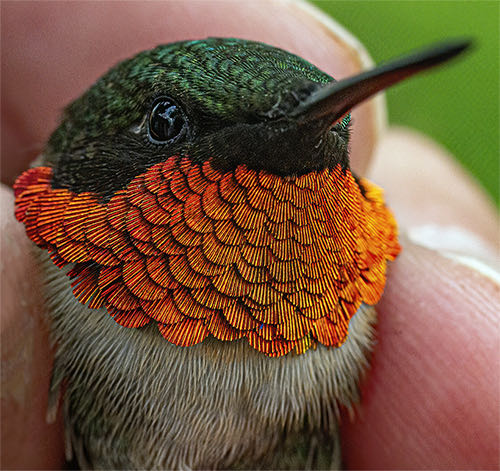



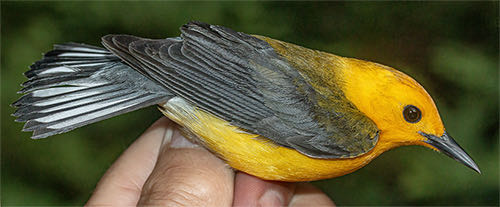
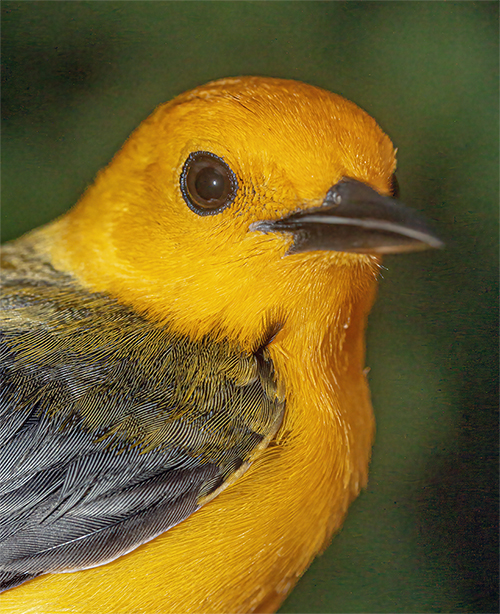

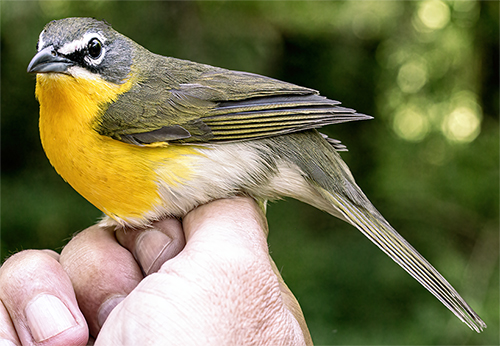
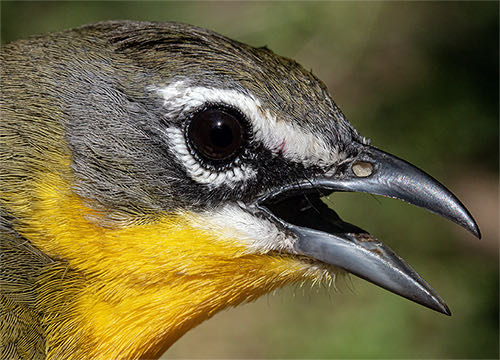
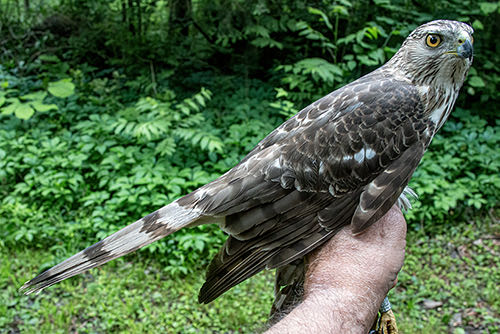


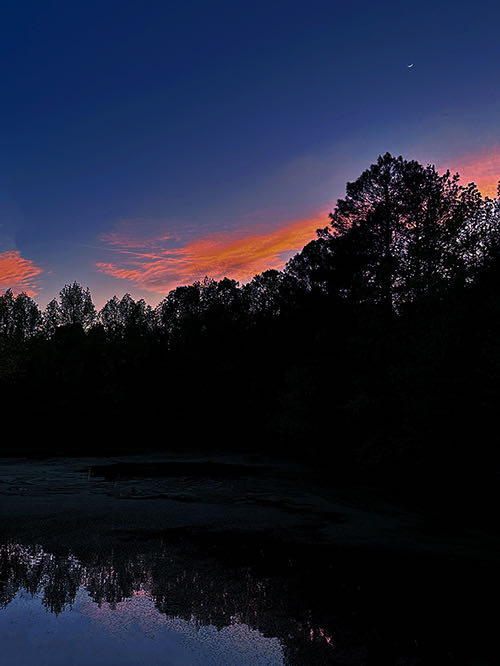
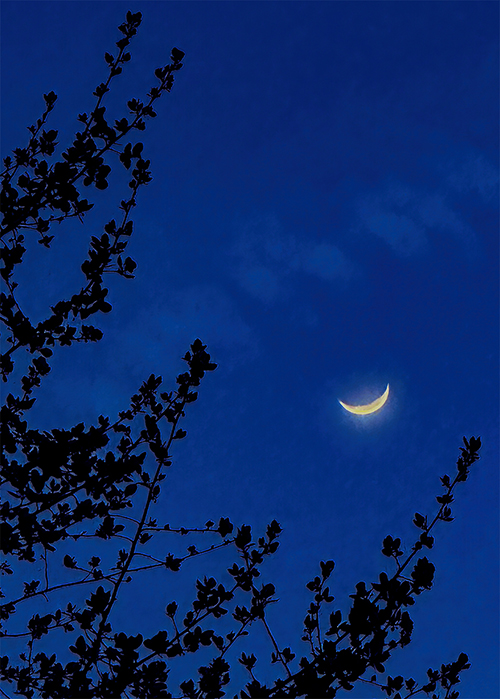









 Please report your spring, summer &
Please report your spring, summer &